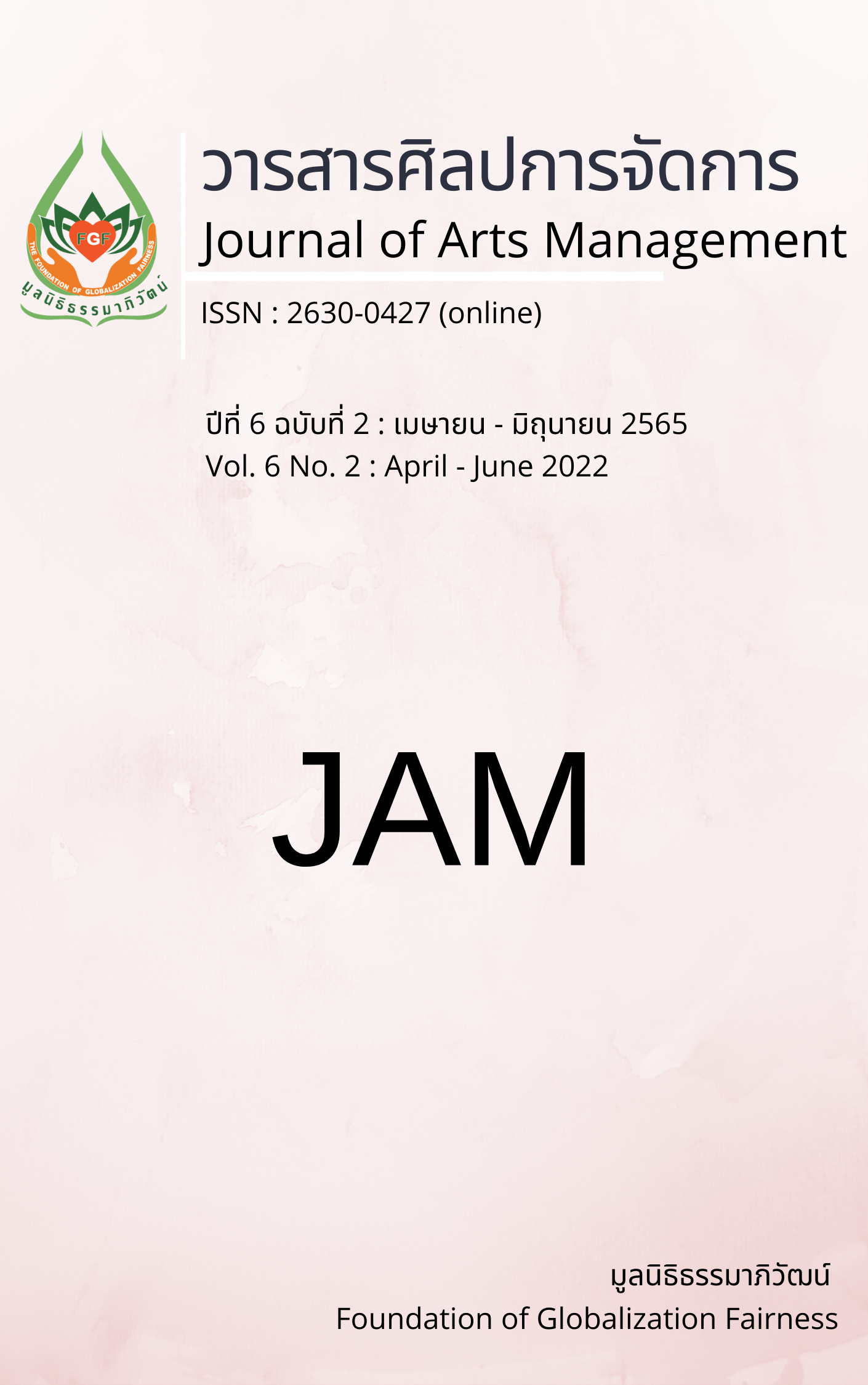The Informative Value of CAMEL on Voluntary Disclosures in Thai Banks
Main Article Content
Abstract
Disclosures in banking businesses and attempt to identify the determinants of voluntary disclosures of the industry using fundamental banking information (i.e., types of shareholders, listed status, and CAMEL). The dataset employed information in Thailand, including listed banks. This study aimed to explore the informative value of CAMEL on voluntary disclosures. Firstly, the study replicated the work of Meek, Roberts & Gray (1995) which classified voluntary disclosures into three types; strategic, financial, and non-financial information, then, further developed the voluntary items according to Thai economy and business practice criteria. The summary of significant 200 self-constructed and un-weighted voluntary disclosures were identified. Voluntary disclosure and CAMEL information were collected from annual reports, SETSMART and other sources which the most updated and were publicly available. The data set covered the banks in Thailand over the 2016-2019 reporting period. The data then were analysed using content analysis, descriptive and multiple regressions.
It was found that Thai listed banks were most likely to voluntarily disclose useful information compared to Thai policy banks and foreign banks located in Thailand. At .05 significant level, the listed banks and liquid assets to total assets significantly were more likely to disclose strategic voluntary disclosures, while management efficiency ratio, return on equity and liquid assets to total assets ratio significantly related to financial voluntary disclosures. In addition, size, cost per unit of money lent and liquid assets to total assets ratio significantly related to non-financial voluntary disclosures. The overall conclusion was that CAMEL could be the representative of the voluntary disclosures. This study was benefit to regulators who wish to motivate and reward banks in order that banks would voluntarily disclose vital information to publics.
Article Details

This work is licensed under a Creative Commons Attribution-NonCommercial-NoDerivatives 4.0 International License.
Views and opinions appearing in articles in the Journal of Arts of Management It is the responsibility of the author of the article. and does not constitute the view and responsibility of the editorial team I agree that the article is copyright of the Arts and Management Journal.
References
Abeywardana, N.L.E., & Panditharathna, K.M. (2016). The extent and determinants of voluntary disclosures in annual reports: Evidence from banking and finance companies in Sri Lanka. Accounting and Finance Research, 5(4), 147-162.
Ab-Rahim, R., Kadri, N., Ee-Ling, A.-C., & Dee, A. A. (2018). CAMEL analysis on performance of ASEAN public listed banks. International Business Research, 11(4), 96-105.
Ahsan, M.K. (2013). Measuring financial performance based on CAMEL: A study on selected Islamic banks in Bangladesh. Asian Business Review, 6(1), 2305-8730.
Armstrong, R. A. (2019). Should Pearson’s correlation coefficient be avoided? Ophthalmic & Physiological Optics, 39(5), 316-327.
Bartov, E., Gul, F., & Tsuib, J. (2000). Discretionary-accruals model and audit qualifications. Journal of Accounting and Economics, 30(3), 421-452.
Federal Deposit Insurance Corporation (FDIC). (1997, January 1). Uniform Financial Institution Rating System. Statement of policy. https://www.fdic.gov/regulations/laws/rules/5000-900.html
Gunarapong, N, Tongkong, S., & Boonyanet, W. (2021). Informative value of voluntary disclosures on stock returns: An empirical evidence from Thai commercial banks. Paper presented at the 3rd International Conference on Business, Management, Social Science, Technology, Education and Engineering (ICBMTE2021), PENANG, Malaysia.
Holland, J. (1998). Private voluntary disclosure, financial intermediation and market efficiency. Journal of Business Finance & Accounting, 25(1-2), 29-68.
Hossain, M., & Taylor, P. J. (2007). The empirical evidence of the voluntary information disclosure in the annual reports of banking companies: The case of Bangladesh. Corporate Ownership and Control, 4(3), 111-125.
International Monetary Fund (IMF). (2019). Financial soundness indicators compilation guide. International Monetary Fund.
Järvinen, J. T., Laine, M., Hyvönen, T., & Kantola, H. (2020). Just look at the numbers: A case Study on quantification in corporate environmental disclosures. Journal of Business Ethics, 175(1), 23-44. https://doi.org/10.1007/s10551-020-04600-7.
Kandel, S. (2019). Analysis of financial performance of commercial banks of Nepal using CAMEL approach. IEEE-SEM, 10(6), 210-237.
Karim, K. E., Pinsker, R., & Robin, A. (2013). Firm size and the voluntary disclosure of nonfinancial information by private versus public firm managers. Managerial Auditing Journal, 28(9), 866-892.
Kumar, M. A., Harsha, G. S., Anand, S., & Dhruva, N. R. (2012). Analyzing soundness in Indian banking: A Camel Approach. Journal of Management Sciences, 1(3), 9-14.
Marra, T., & Suijs, J. (2004). Going-public and the influence of disclosure environments. Review of Accounting Studies, 9, 465–493.
Meek, G. K., Roberts, C. B., & Gray, S. J. (1995). Factors influencing voluntary annual report disclosures by U.S., U.K. and Continental European Multinational Corporations. Journal of International Business Studies, 26(3), 555-572.
Nguyen, A. H., Nguyen, H. T., & Pham, H. T. (2020). Applying the CAMEL model to assess performance of commercial banks: empirical evidence from Vietnam. Banks and Bank Systems, 15(2), 177-186.
Panrod, T. (2018). Performance evaluation of commercial banks in Thailand by using CAMEL model. Humanities, Arts and Social Sciences Studies, 18(1), 171-188.
Sangmi, M., & Nazir, T. (2010). Analyzing financial performance of commercial banks in India: Application of CAMEL model. Pakistan Journal of Commerce and Social Sciences, 4(1), 40-55.
Soliman, M. M. (2013). Firm Characteristics and the Extent of Voluntary Disclosure: The Case of Egypt. Research Journal of Finance and Accounting, 4(17), 71-81.


